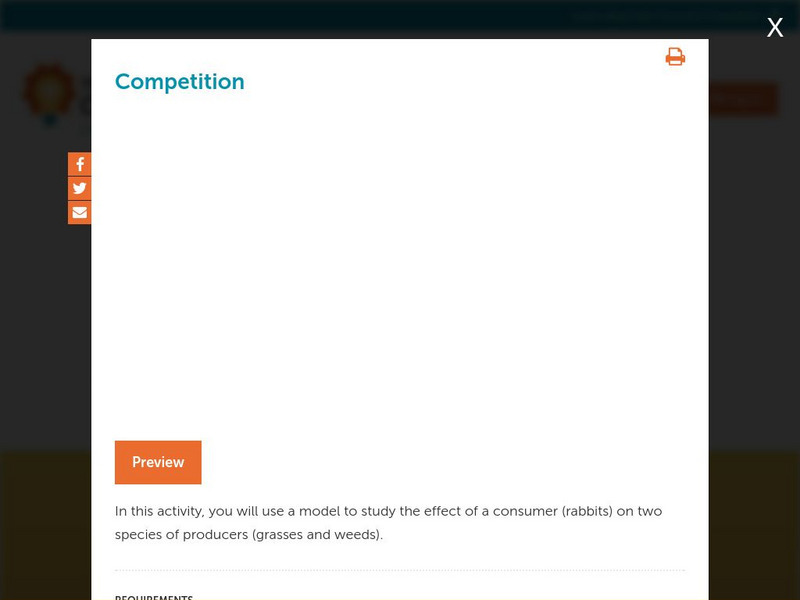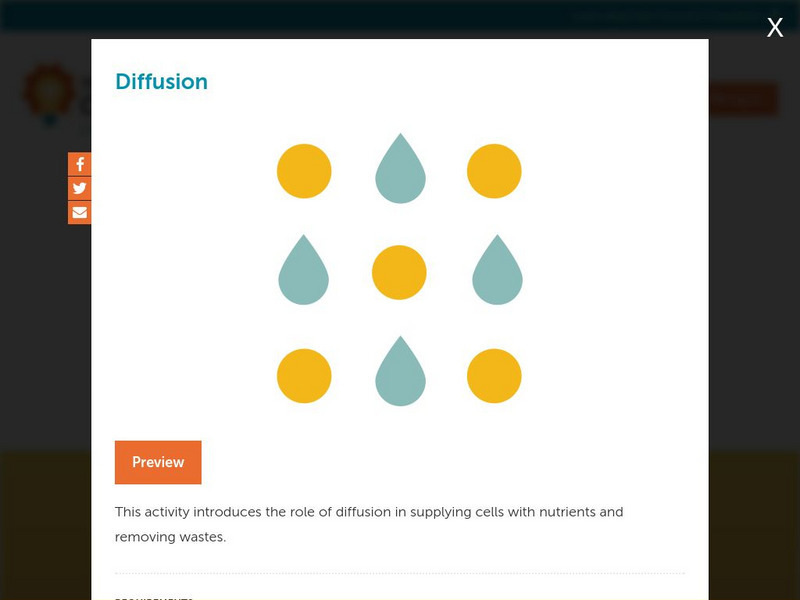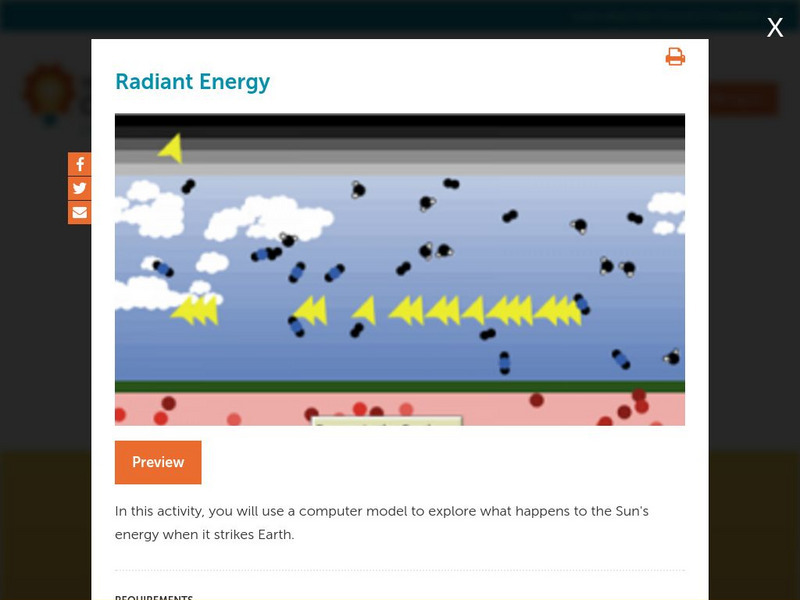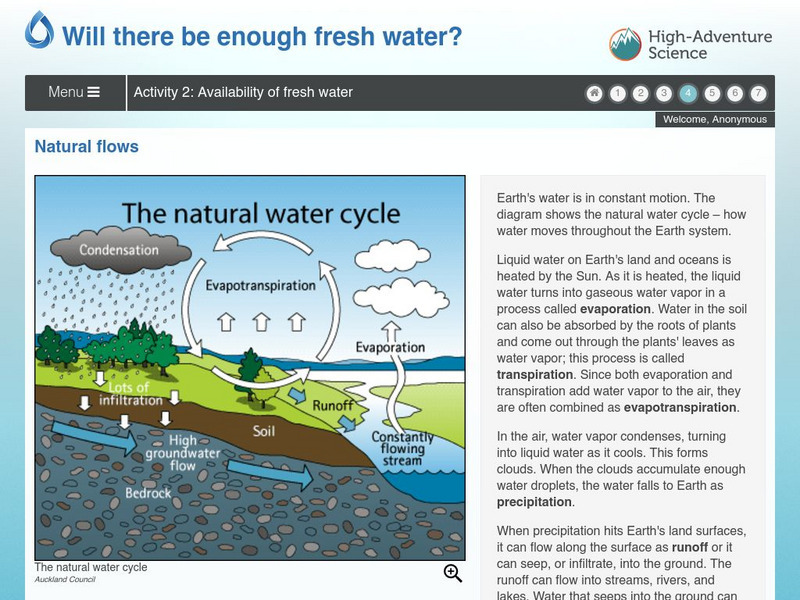Concord Consortium
Concord Consortium: Stem Resources: Solar Oven
Use the sun's energy to cook an egg? Design, build and test a solar oven. Activity gives a procedure to build oven as well as questions to answer. Questions can be saved and graded by instructor.
Concord Consortium
Concord Consortium: Stem Resources: The Virtual Greenhouse
A virtual greenhouse to study how plants adapt to live in different environments. Students will "plant" three different types of plants that thrive with different amounts of sunlight. Lab includes questions that could be saved and graded...
Concord Consortium
Seeing Math: Linear Transformer
Transformations of linear functions, with links between the symbolic and graphic forms, can be powerful tools to help students overcome conceptual hurdles in algebra.
Concord Consortium
Seeing Math: Function Analyzer
The Function Analyzer allows learners to see the connections among three representations of a function: symbolic, area, and graphic. In addition, by allowing learners to change the value of four elements of a function - the coefficient...
Concord Consortium
Seeing Math: Quadratic Transformer
The Quadratic Transformer was developed to support the learning of quadratic functions, and in particular to help you understand the connections between symbolic and graphic representations. Indirectly, it also helps you connect either...
Concord Consortium
Seeing Math: System Solver
Deepen your understanding of systems of linear equations with the System Solver. This interactive offers unique opportunity to perform operations on a system and immediately observe the graphic, tabular, and symbolic results of the...
Concord Consortium
Seeing Math: Plop It
Plop It! lets you experiment with the concepts of mean, median, and mode (measures of center). You see the differences among them on a bar graph, as you add or remove blocks to an axis with a given range.
Concord Consortium
Concord Consortium: Stem Resources: Transistors
Understand what a field effect transistor does as the building blocks of modern electronic devices. The module has several simulations that explore properties of the field effect transistor. Students will learn about logic gates as well...
Concord Consortium
Concord Consortium: Geniverse Software
A collection of virtual labs focusing on genetic activities relating to a made up dragon genome. Students explore how inheritance works by studying different cases and running breeding experiments. By changing alleles, students perform...
Concord Consortium
Concord Consortium: Stem Resources: Competition
An interactive activity where students study how two species of producers are affected by a consumer. By completing several virtual experiments and collecting data, students will be able to summarize what plants can do to defend...
Concord Consortium
Concord Consortium: Stem Resources: Diffusion
An activity to understand how diffusion is a result of random motion and collisions of particles. With the virtual labs, explore how a drop of food coloring into a glass spreads and how perfume diffuses at different temperatures and...
Concord Consortium
Concord Consortium: Stem Resources: Electrons in Atoms and Molecules
A module with animations, explanations, and questions about the importance of electrons in the structure of an atom. Understand the definition and locations of electrons in the atom. Explore the role of electrons in bonding, polarity,...
Concord Consortium
Concord Consortium: Stem Resources: Intermolecular Attractions
Learn that boiling point, solubility, and DNA are affect by intermolecular forces in this module. Module includes lessons with questions and animations to explain London dispersion and dipole-dipole attractions. To conclude the lessons,...
Concord Consortium
Concord Consortium: Stem Resources: The Quantum Basics of Electrons
Simulations that show the concepts of probability distribution and the behavior of electrons that will help students understanding of quantum mechanics. Students will learn about electrons movement when they are in an excited state. At...
Concord Consortium
Concord Consortium: Stem Resources: Making Waves
Learn how to make waves! Using a motion sensor, students will recreate distance vs. time graphs given in the lab. Lab gives a detailed procedure as well as questions that can be saved online.
Concord Consortium
Concord Consortium: Stem Resources: Motion on a Ramp
Using a motion detector, students produce graphs that show the motion of a toy car as it moves on a ramp. Students collect distance versus time graphs and velocity versus time graphs as well as predict what the motion will look like on...
Concord Consortium
Concord Consortium: Stem Resources: Radiant Energy Flow
A virtual lab to look at the physical features of Earth that affect the amount of the Sun's energy that hits Earth. Students investigate how solar and infrared radiations enters and leaves the atmosphere with this model. Virtual lab...
Concord Consortium
Concord Consortium: Stem Resources: Will There Be Enough Fresh Water?
Using groundwater models, students will analyze whether there will be enough fresh water available for the growing human population. Students will investigate how groundwater moves, what surface water is, and how we can use water...
Concord Consortium
Concord Consortium: Stem Resources: Variations and Adaptations
Experiment with variations in grass to see which size grows best with different amounts of water. Understand that grass that can live in different levels and change to its environment has a better chance of surviving. Also, experiment...
Concord Consortium
How Are Interactions With Water Important for Maintaining My Life?
An investigation of how polar and nonpolar interactions affect shapes of biological molecules and their function. Modules explore the following: 1. Why don't oil and water mix? 2. Can a substance dissolve in both a nonpolar and a polar...
Concord Consortium
What Happens to the Energy of Water Molecules During Hurricanes?
How does energy charge when evaporation is reversed? and What powers a hurricane? are explored in this module.
Concord Consortium
Concord Consortium Where Does the Energy of a Spark Come From?
Students define potential energy and explore the relationship between potential energy and field. How does potential energy change when things are pushed or pulled? Where does the energy that was used to charge the Van de Graaff...
Concord Consortium
Concord Consortium What Is Happening When a Spark Occurs? Activity 2: What Happens to Energy When Objects Collide?
An investigation of what happens to energy during changes.
Concord Consortium
Concord Consortium: What Are Factors That Affect How Strongly Objects Interact With Each Other?
Explore and use models of electric fields to explain how charged objects interact with other objects.


















